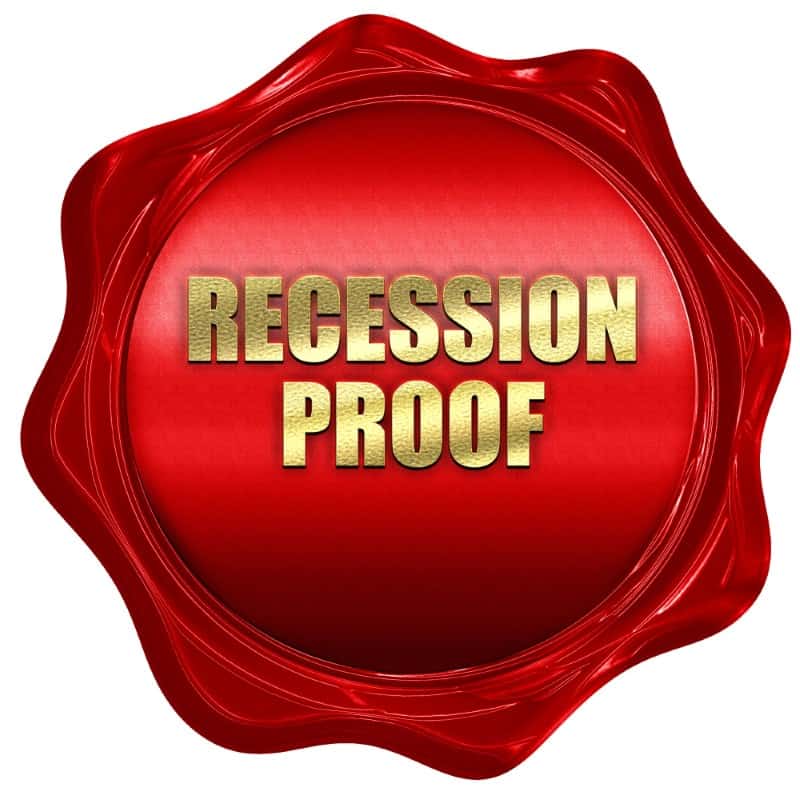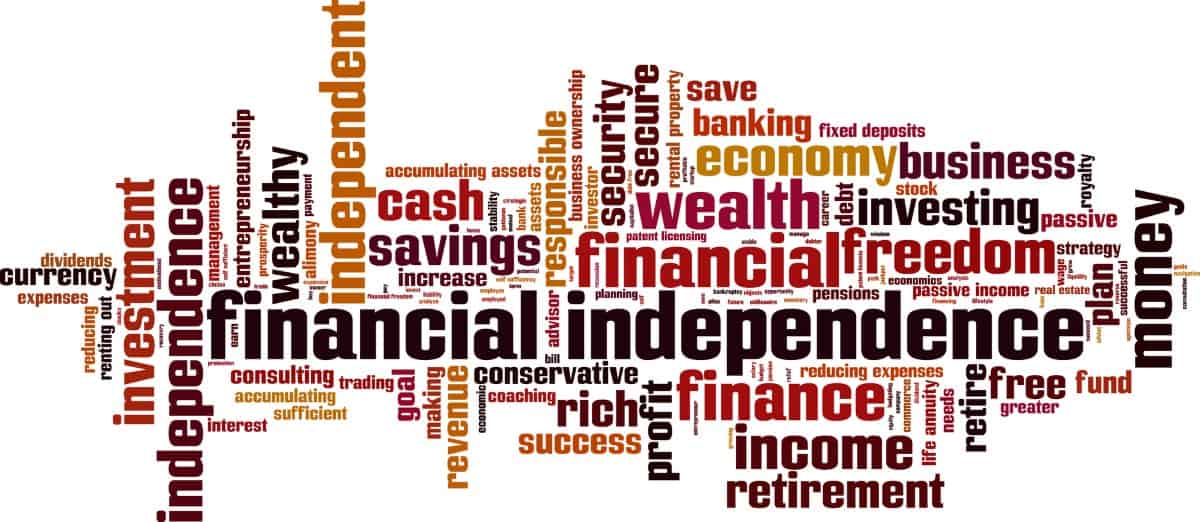How To Safeguard Your Retirement And Protect Your Savings During Financial Turbulence – Financial Freedom Countdown

In a time of increasing financial uncertainty, many investors have traditionally turned to bonds for stability. But with high inflation, retirement plans are being disrupted as bond funds experienced significant losses in 2022.
Changing Tides for Retirement Portfolios

Diversifying one’s investment portfolio to include both stocks and bonds is a fundamental principle in investing. This time-tested strategy has proven highly effective over the last 40 years.
In 2022, both stocks and bonds took a tumble. The dual downturn, a rare occurrence in the financial world, has caused concern among those planning their golden years.
Historically, stocks have demonstrated the potential to generate substantial returns over extended periods. Therefore, allocating a significant portion of investments towards stocks is advisable. However, investing in stocks comes with inherent risks and volatility. While occasional financial losses are possible, the long-term profitability remains promising.
On the other hand, bonds offer a more stable and predictable rate of return. They act as a buffer against the inevitable fluctuations of the stock market. During bearish phases in the equities market, Treasury bond prices tend to rise as investors pursue safe-havens.
Balanced funds have traditionally provided a protective shield against market volatility, offering stability during favorable market conditions and downturns. Recent periods have witnessed significant decreases in both stock and long bonds.
Bonds No Longer the Ballast in Retirement Portfolios

Traditionally, bonds have been considered the bedrock of retirement portfolios, offering a relatively steady and less risky source of income. These fixed-income investments buffer against the stock market’s volatility, leading many to rely heavily on them for retirement savings.
However, the current economic climate has shaken this long-standing belief, as bonds, like stocks, feel the impact of rising inflation. This unexpected twist challenges the conventional wisdom of retirement planning and prompts a reevaluation of investment strategies.
The Vanguard Total Stock Mkt Index (VTSAX) lost 20% in 2022, and the iShares 20+ Year Treasury Bond ETF (TLT) was down 31%.
The iShares 20+ Year Treasury Bond ETF (TLT), exclusively focused on long-dated Treasuries, has exhibited a decline of approximately 50% in value since August 2020, primarily driven by losses on the 30-year Treasury bond.
Likewise, the iShares 7-10 Year Treasury Bond ETF (IEF), investing in medium-duration Treasury notes, has experienced a reduction exceeding 25%.
Sailing Through Choppy Waters With Unfavorable Returns

Financial advisors play a pivotal role in helping clients understand the intricate dynamics of investment portfolios, especially the roles and potential risks associated with stocks and bonds.
Advisors should encourage clients to envision scenarios where both stocks and bonds could yield disappointing returns. For instance, stock prices may plummet during economic downturns due to declining corporate profits. Similarly, an unexpected spike in inflation can erode the purchasing power of the fixed returns from bonds, making them less valuable.
Understanding these dynamics allows for better portfolio diversification, ensuring clients’ investments are spread across various income-generating assets. This strategy can help mitigate the risks associated with unfavorable market conditions, providing a safety net and maintaining a balanced investment approach.
By understanding these potential risks, clients can be better prepared for the unpredictability of the markets.
Amar Shah, CFA, CFP is seeing an influx of new clients from individuals whose financial advisors have followed a buy-and-hold or an efficient frontier asset allocation model. He says, “When the risk-free rate is north of 5%, investors should ask if they would get paid appropriately for taking that additional duration risk by owning a 10-15-year bond. Most of the time, individuals would rather own equities for that time horizon. For individuals looking to generate income from a portfolio, we coach them consistently to look at total return vs. just the income component of their investments to fully understand the withdrawal stress on a portfolio.”
Stay the course

Introducing additional asset classes or adding complexity to portfolios may not always be beneficial, particularly for retirees who rely on their investments for monthly income.
While diversification is a critical strategy in investment management, overcomplexity can lead to unforeseen risks. Diversifying into alternative assets such as commodities, real estate, or private equity can expose retirees to higher volatility, illiquidity, and potentially higher fees.
It may confuse investors who are less familiar with these asset classes. Furthermore, these alternative investments often require a longer time horizon to realize returns, which may not be suitable for retirees.
Therefore, retirees must understand the risks of any new investment and consider simpler, more traditional investment strategies that align with their risk tolerance and income needs.
Related Article: 20 Ways To Invest In Real Estate With Little Or No Money
Bucket Strategy

Scot Johnson, CFA, recommends a retirement bucket strategy approach for simplicity. He says, “Money we won’t need for a good while can go into a stocks bucket, where historically assets have appreciated nicely over longer periods and provide dividend income. The money we might need during the next 5-7 years goes into a bonds bucket. We’re collecting interest income, and each year, we will have a bond or a handful of bonds that mature and deliver cash flow toward anticipated cash needs. Clients’ rainy-day fund and money they’ll need over the next 6-12 months stays in the cash bucket, which gets re-filled as cash from dividend and interest income and bond maturities rolls in. We re-fill the bonds bucket when we can harvest from stocks that have appreciated during a friendly market environment.”
He believes that bond funds aren’t optimal for retirees to have bond exposure and recommends buying individual bonds for clients. The combination of interest income and maturities generates natural cash flow that isn’t impacted by movements in interest rates and bond prices. He adds, “In our experience, this bucket approach to the overall portfolio and laddered approach to owning bonds helps clients have peace of mind. “
A Glimmer of Hope on the Distant Horizon

As of this year, although the iShares 20+ Year Treasury Bond ETF (TLT) is down another 6%, the stock market has recovered. The Vanguard Total Stock Mkt Index (VTSAX) is up 11.21% year-to-date, helping retirees feel better about enjoying their retirement.
While geopolitical concerns cast a shadow on the future market outlook, a well-defined retirement plan should weather the storms.
Like Financial Freedom Countdown content? Be sure to follow us!
Top 6 High-Paying Jobs That Thrive Even in Recession Times

We all want a job that pays well, gives our life meaning and lets us do something useful. However, job security is also vital to long-term growth and increasing our average net worth, which means working in a recession-proof field. If the past few years have taught us anything, some jobs are built to last and can withstand any economic downturn. It can unquestionably influence the field of work that we choose to go into. So, what are recession-proof jobs, and what aren’t? Here’s a look at some of the top recession-proof jobs.
Top 6 High-Paying Jobs That Thrive Even in Recession Times
Trump Tax Cuts Expiring Soon: Action Steps You Need to Take Now

Several key elements of the Tax Cuts and Jobs Act (TCJA) are scheduled to lapse by 2025. This pivotal tax reform, implemented during President Trump’s tenure, brought substantial changes to the U.S. tax structure. With the expiration drawing near, it’s crucial for individuals to take proactive steps in their tax planning.
Trump Tax Cuts Expiring Soon: Action Steps You Need to Take Now
JPMorgan’s Stark Warning: How Impending Stagflation Could Upend Your Financial Future

JPMorgan has cautioned that the present economic landscape might evolve into a scenario reminiscent of the 1970s, featuring stagflation characterized by elevated inflation and sluggish growth. JPMorgan draws parallels between current geopolitical tensions and those of the 1970s, suggesting a potential inflationary impact.
JPMorgan’s Stark Warning: How Impending Stagflation Could Upend Your Financial Future
The 2024 CBO Report Unveils a Dire Path Ahead for the U.S. Economy and National Budget

The Congressional Budget Office (CBO) performs nonpartisan analysis for the U.S. Congress. The latest Budget and Economic Outlook released offered projections for the country’s fiscal and economic landscape over the upcoming decade. This recent update, building on the May 2023 baseline, incorporates the effects of new legislation and executive decisions, alongside changes in inflation, immigration, interest rates, and economic growth patterns, among other variables.
The 2024 CBO Report Unveils a Dire Path Ahead for the U.S. Economy and National Budget

Deciding when to claim Social Security benefits is a critical decision for retirees. Two common strategies are claiming Social Security at age 62 and preserving retirement funds or using 401(k) savings and delaying Social Security until age 70. Each approach has its advantages and drawbacks, influenced by individual financial situations and goals.
Smart Retirement Planning: Should You Use Your 401(k) to Delay Social Security Until 70?
Exploring Government Programs Granting Free Land for Affordable Homeownership: From Colorado to Iowa

Small towns across the US are offering free land for those ready to build homes and contribute to their communities. As housing costs soar nationwide, these towns are innovating to attract new residents and revitalize their local economies. From the Midwest to the Mountain states, these programs offer more than just affordable homeownership; they invite you to join a tight-knit community and embrace a whole new way of life.
Exploring Government Programs Granting Free Land for Affordable Homeownership: From Colorado to Iowa
Master the Two Key Numbers for Financial Independence

Dreaming of retirement? It might feel distant, but reaching that magic number in your bank account is key. Yet, standard financial calculators offer generic figures. Unveil the path to financial freedom by focusing on just two vital numbers: retirement expenses and safe withdrawal rate. Let’s explore how to calculate these for your unique lifestyle.
Master the Two Key Numbers for Financial Independence

Dreaming of retiring to picturesque locales? Many Americans yearn for foreign adventures in their golden years. Yet, securing Social Security benefits abroad isn’t guaranteed. Before jetting off, learn which nine countries may disrupt your retirement dreams.

John Dealbreuin came from a third world country to the US with only $1,000 not knowing anyone; guided by an immigrant dream. In 12 years, he achieved his retirement number.
He started Financial Freedom Countdown to help everyone think differently about their financial challenges and live their best lives. John resides in the San Francisco Bay Area enjoying nature trails and weight training.
Here are his recommended tools
M1 Finance: John compared M1 Finance against Vanguard, Schwab, Fidelity, Wealthfront and Betterment to find the perfect investment platform. He uses it due to very low minimums and fees, automated investment with automatic rebalancing. The pre-built asset allocations and fractional shares helps one get started right away.
Personal Capital: This is a free tool John uses to track his net worth on a regular basis and as a retirement planner. It also alerts him wrt hidden fees and has a budget tracker included.
Streitwise is available for accredited and non-accredited investors. They have one of the lowest fees and high “skin in the game,” with over $5M of capital invested by founders in the deals. It is also open to foreign/non-USA investor. Minimum investment is $5,000.
Platforms like Yieldstreet provide investment options in art, legal, structured notes, venture capital, etc. They also have fixed-income portfolios spread across multiple asset classes with a single investment with low minimums of $10,000.




